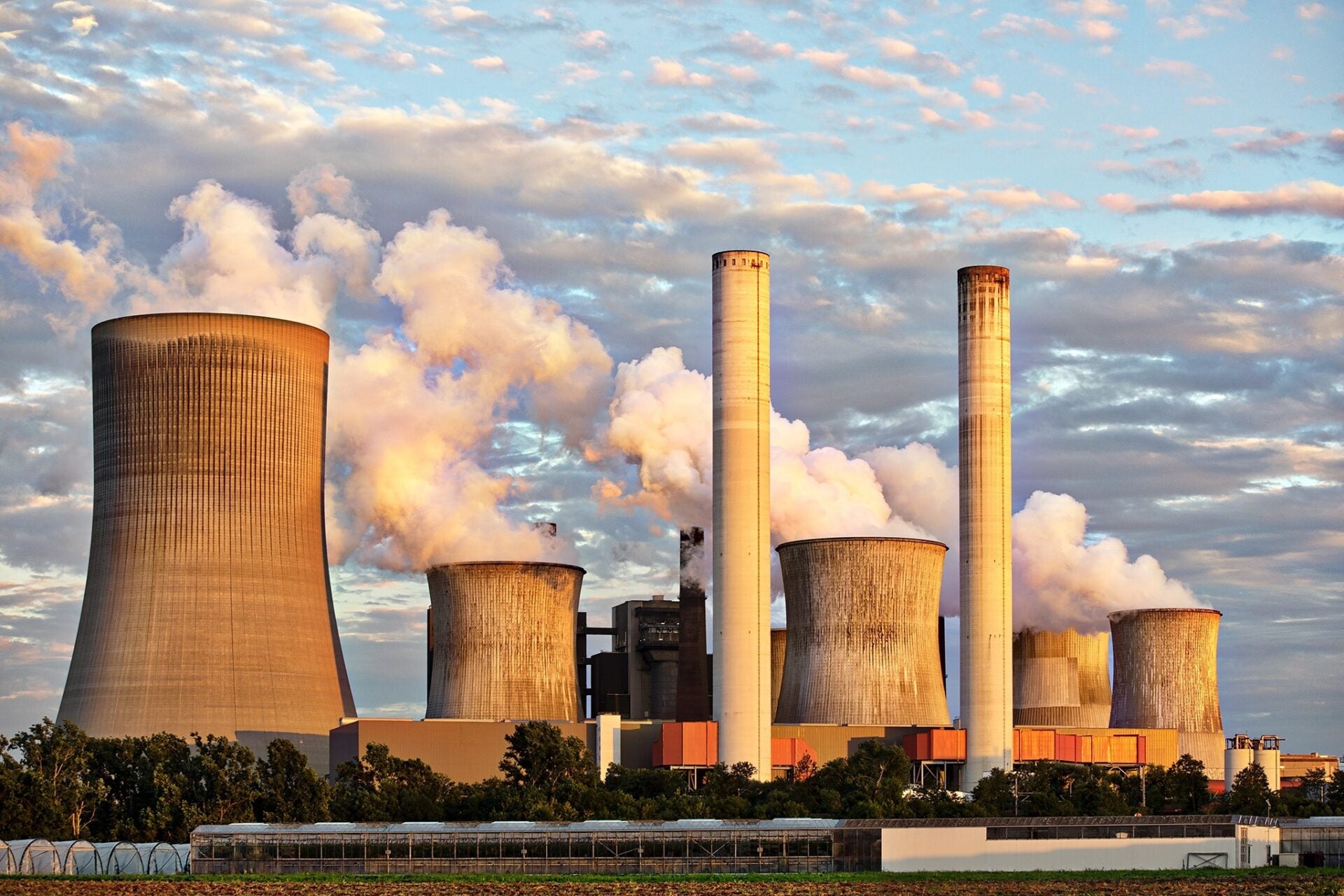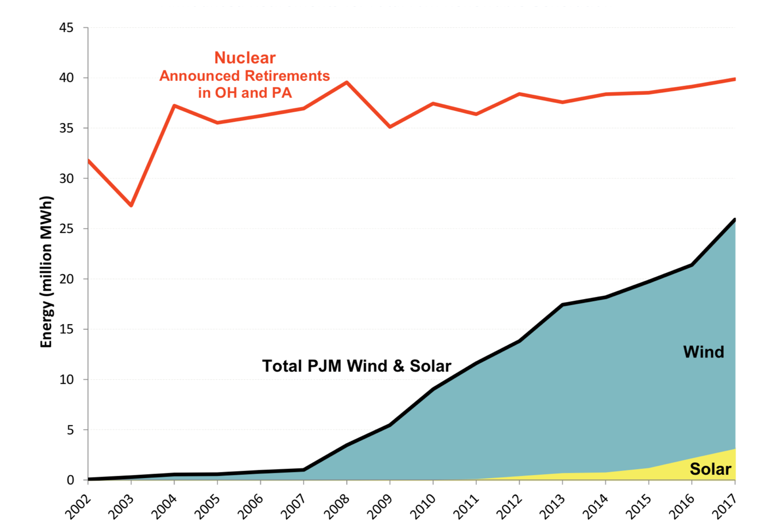
Keeping Nuclear Power Plants Running is Vital to Meeting Climate Goals
Many environmental groups fall in lockstep with anti-nuclear activists, despite the climate benefits nuclear reactors provide.
Pennsylvania today remains at the forefront of nuclear power generation, with five nuclear plants providing around 40 percent of our electricity. This reality is quickly changing, as two of Pennsylvania’s power plants are now slated to close within the next three years: Exelon announced that it will prematurely (meaning prior to license expiration) retire Three Mile Island in 2019 and FirstEnergy Solutions announced the closure of the Beaver Valley nuclear reactor, alongside two other plants in Ohio.
These announced closures should come as no surprise to anyone who has been following the steady stream of periodic premature retirement announcements at the national level, with around 15 to 20 nuclear power plants across the country at risk of closing within the next five to ten years. In the Mid-Atlantic region alone (via the PJM Interconnection power grid), the four planned nuclear plant closures would result in a roughly 40 TWh decrease in carbon-free electricity provided to the PJM regional grid, the majority of which would likely be replaced by natural gas.
The reasons for these closures are ones that we’ve all heard before, often also said in relation to coal power plant shutdowns: cheap natural gas combined with flat electricity demand makes operating and maintaining the more expensive nuclear (or coal) plants uneconomic.
From a climate mitigation perspective, the planned nuclear power plant closures should come as an alarming call to action for environmentalists and anybody worried about climate change. Yet many environmental groups fall in lockstep with anti-nuclear activists, despite the obvious and enormous climate benefits that nuclear reactors provide.
More nuclear power plants don’t have to close, and they wouldn’t if there were sustained and loud political pressure from anybody who recognizes the serious and extreme threat posed by climate change. To combat premature nuclear plant closures, three states—New York, New Jersey, and Illinois (Connecticut has a program that will allow nuclear plants to get preferential treatment in power contracts if risk of closure is proven)—have established a Zero Emission Credit (ZEC) subsidy for nuclear. (For information on how ZECs work, check out this KCEP blog by Rachel Valetta.) In New York, this subsidy will amount to around $17.48 per ZEC for the first two years; by comparison, the state’s Renewable Portfolio Standard (RPS) subsidy cost ratepayers around $24 per RPS credit in 2016.
Generation of OH and PA Nuclear Plants with Announced Retirements vs. Total PJM Renewable Generation

Pennsylvania already has an Alternative Energy Portfolio Standard (AEPS), established in 2004, which has created a large Renewable Energy Credit (REC) market to subsidize renewable energy growth. Despite this, in 2017, renewable energy remained a meager 4.5 percent of Pennsylvania’s net electricity generation. According to a nuclear advocacy funded analysis by the Brattle Group, closing the four PJM nuclear plants in Pennsylvania and Ohio that are set to prematurely retire would “more than reverse the emissions benefits of all the renewable generation in PJM installed over the past 25 years [and] at the current rate of renewable additions, total zero-emission generation in PJM would not return to 2017 levels until 2032.” (See, for example, Germany.) Despite this, many large environmental advocacy organizations such as the Sierra Club, Friends of the Earth or Greenpeace remain “unequivocally opposed” to nuclear power.
There are some notable exceptions to this rule: EDF and NRDC have supported nuclear subsidies to maintain zero carbon power, and also defended states’ rights to put policies like ZECs and RPS in place throughout legal challenges. (For an explainer of the uncertain future of ZECs and RPS in PJM’s capacity market due to a recent FERC order, read Christina Simeone’s blog post.) More environmental organizations must follow the lead of EDF and NRDC by allowing their stance on nuclear power to evolve from their historical opposition and embrace it as the enormous source of carbon-free electricity that it is.
In Pennsylvania and Ohio, the climate catastrophe of losing 40 TWh of existing carbon-free electricity should mobilize environmental groups and nuclear advocacy groups alike to advocate for subsidies on existing nuclear power plants. Together, renewables, nuclear, and other clean energy technologies can work in tandem to transition to decarbonization in the fastest, most efficient way possible.
Anna Cheyette
School of Arts and SciencesAnna Cheyette is an Environmental Studies student in the School of Arts and Sciences and was an Energy Analyst Fellow at the City of Philadelphia for summer 2018.

